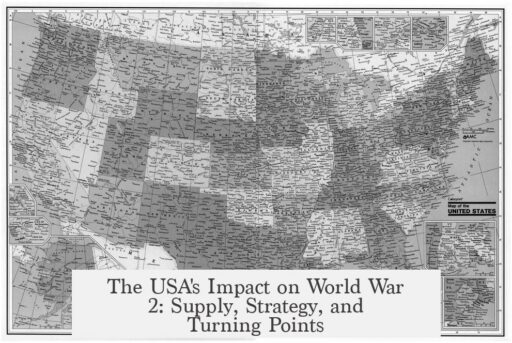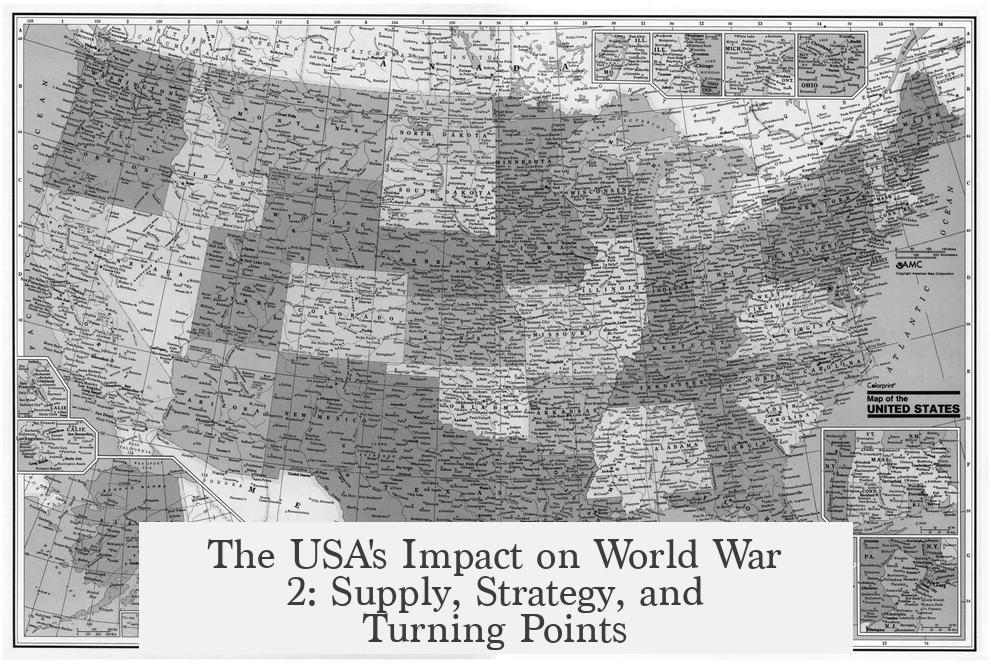The USA played a crucial and multifaceted role during World War II, serving as the primary supplier of materials and equipment, a major combatant, and a strategic force in both the European and Pacific Theaters. Its contributions were vital in supporting Allied powers, particularly the Soviet Union, and in forcing Axis powers to fight on multiple fronts.
One of the most significant American roles lay in logistical support, especially through the Lend-Lease program. This vast effort provided the Soviet Union with tens of thousands of trucks, vehicles, ammunition, fuel, and millions of tons of food. American industrial production made possible the motorization of Soviet logistics, a stark contrast to German forces relying heavily on horse-drawn transport. The USSR received about 95% of its railroad materials from the U.S. and more than half its aircraft fuel, equipment that was essential in sustaining its war effort. Field Marshal Zhukov acknowledged that American supplies were indispensable in equipping and resupplying the Red Army. Without this support, Soviet advances might have stalled or failed entirely.
While the Soviet Union bore the majority of the fighting on the Eastern Front, American and British military actions influenced the overall balance. The US-led landings in North Africa diverted German air and ground forces from the Soviet siege of Stalingrad. This reduction in German pressure allowed the Red Army to regain air parity and push back, proving critical to one of the war’s decisive battles. Additionally, the American opening of multiple fronts in Western Europe, including the Normandy invasion, forced Germany to split its forces further. This alleviated pressure on Soviet troops and accelerated the Axis powers’ collapse.
Strategic bombing campaigns conducted by the US and Britain aimed to cripple German industry and morale. Though the direct effect on German war production remains debated, the bombing tied down significant German resources in air defense, and contributed to limiting their operational capacities. German war production actually increased in 1943 despite the bombing, indicating only partial success, but the sustained bombing pressured Germany over time.
In the Pacific Theater, the US assumed an even more dominant role. After Pearl Harbor, the American Navy and forces became the main opponents of Japanese expansion. The US conducted large-scale operations across island chains, critical to halting Japan’s aggression and eventually forcing its surrender. While other Allies like Britain and Australia participated, their involvement was comparatively limited. The US Navy’s presence ensured control of sea lanes that prevented Japan from sustaining its conquests unchecked.
The timing of US entry into the war is often misunderstood. The United States entered officially after the Japanese attack on Pearl Harbor in December 1941, which galvanized public and political support for full-scale involvement. Though the US delayed direct intervention against Germany initially, this was a strategic choice, not a lack of commitment. Once engaged, the US emerged as the war’s “production mogul,” mobilizing unparalleled industrial capacity to supply the Allies.
The Lend-Lease aid, while vast, is sometimes considered overrated by certain historians. A minority of this aid directly supported the Soviet Union; most went to Britain and other Allies. Soviet internal production remained dominant, with Lend-Lease shortening the war and reducing Soviet casualties but not serving as the sole factor of victory. Nonetheless, American industrial might and material aid offset German advantages in the field and sustained Allied forces fighting prolonged battles.
The Allied victory was a collective effort. No single nation won alone. The Soviet Union’s Red Army bore the brunt of the Eastern Front fighting. The UK maintained resistance after early defeats and contributed crucial intelligence and strategic operations. The US delivered the industrial output, manpower, and new fronts that split Axis attention. Coordination between these powers, alongside contributions from others, was essential.
| Aspect | US Role | Impact |
|---|---|---|
| Logistical Support (Lend-Lease) | Massive supply of vehicles, fuel, ammo, food | Enabled USSR’s effective mechanization and sustained offensive |
| Eastern Front | Provided material aid; while USSR fought bulk of battles | Helped Soviet victories (Stalingrad), eased pressure |
| Western Front | Led major invasions (Normandy), opened multiple fronts | Forced German force dispersal, contributed to liberation of Europe |
| Pacific Theater | Dominant military presence; led naval and land campaigns | Stopped Japanese expansion, drove Japanese surrender |
| Strategic Bombing | Extensive bombing of German industry | Limited German capacity over time, though with debated effectiveness |
- The US supplied critical material aid, most notably to the USSR and Britain, which sustained Allied military efforts.
- American military operations opened new fronts that split Axis forces, aiding Soviet advances in the East.
- In the Pacific, the US led nearly all combat against Japan, ending its expansion and securing victory.
- Allied victory resulted from coordinated efforts; no single power won alone.
- US industrial strength and mobilization were decisive in maintaining Allied operational superiority.
How Big of a Role Did the USA Play During World War 2?
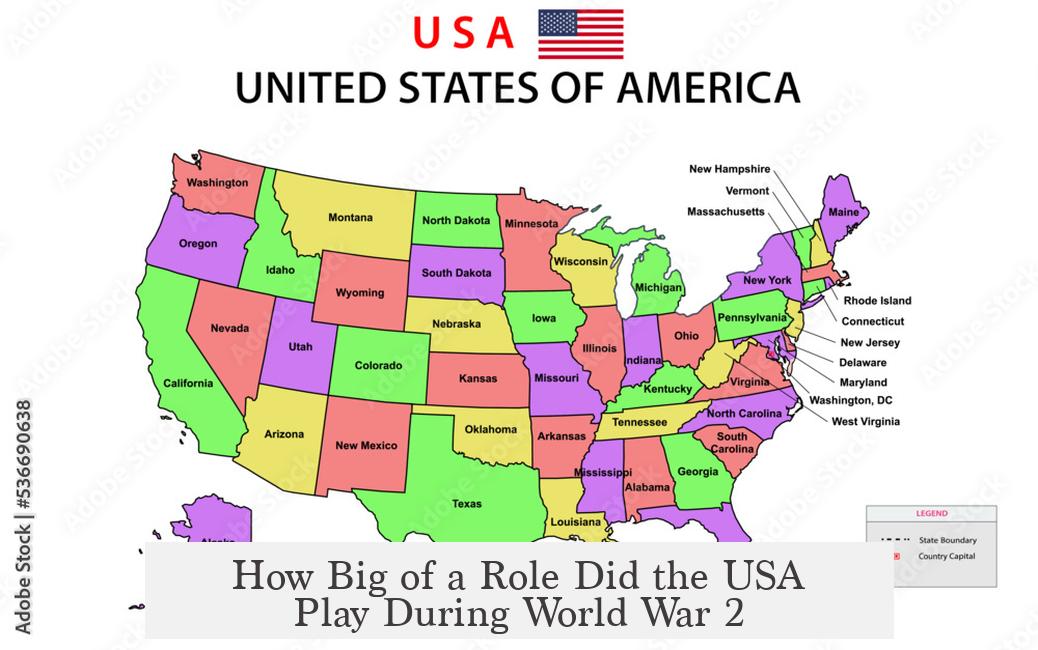
The USA played a massive and multifaceted role during World War 2, becoming the industrial powerhouse that fueled the Allies’ victory while also engaging directly in combat, especially in the Pacific. Without U.S. production, logistics, and military efforts, the tide of the war would have turned very differently.
Let’s unpack how the United States helped win this colossal conflict. Spoiler: It wasn’t just about storming Normandy or dropping the bomb on Japan—there’s a whole lot more at play.
Lend-Lease and Industrial Muscle: America as the Allies’ Supply Depot
Picture this: the Soviet Union, strained and bloodied, desperately needs trucks, rails, fuel, and food to keep its colossal war machine running. Here steps in the USA, the great “production mogul” of the war, supplying tens of thousands of trucks and rail materials made in American factories. The Lend-Lease program was essentially the Soviet front’s logistics lifeline.
Field Marshal Zhukov, a top Soviet commander, famously credited the Americans with shipping vital materials without which the Red Army couldn’t have continued. Think about that—millions of tons of food and ammo, rails, aircraft fuel, and vehicles coming from across the Atlantic. This logistical boost let the Soviets motorize their operations while Germany fought with a messier, less-supplied system. The Germans had less than a fifth of their supplies moved by vehicles; the Soviets, nearly all of it. That’s a huge difference when you’re moving thousands of kilometers east against a relentless enemy.
Even before the U.S. fully jumped into the war, lend-lease shipments began immediately upon the Nazi invasion of Russia. Britain and America combined forces to back the Soviet logistics and keep their blood-soaked Eastern Front from collapsing.
But hold on — some say lend-lease might be slightly overrated. Sure, it was fantastic aid. But only about 15-20% of American supplies went to the Soviets, and much of their production was domestic. And by the time lend-lease really kicked in, the Wehrmacht was already facing defeat. Still, it shortened the war and saved countless lives.
The Eastern Front: How American Efforts Indirectly Changed the Game
The battle for Stalingrad is legendary. Common knowledge suggests the Soviets alone won that brutal fight. But did the US play a more delicate supporting role? Absolutely.
The Allies’ landing in North Africa (Operation Torch) diverted German air forces from Stalingrad to Sicily. Without this shift, the Luftwaffe would have maintained air superiority, turning the battle southward against the Soviets. This air parity was crucial for the Red Army’s eventual hard-fought victory, which, alongside the North African (Tunisia) campaign, rolled back the German offensive significantly.
By the time the Americans invaded Normandy in 1944, the pressure was really on multiple fronts. Germany had to fight not only the grunt Soviets in the East but also American and British-Canadian forces in the West and the Italian Front in the south—another campaign energized by President Roosevelt’s push. Dividing Hitler’s forces like this was a strategic jigsaw the US helped put together, speeding the collapse of the Nazi war machine.
Western Front: Normandy and Beyond — Not the Entire Story
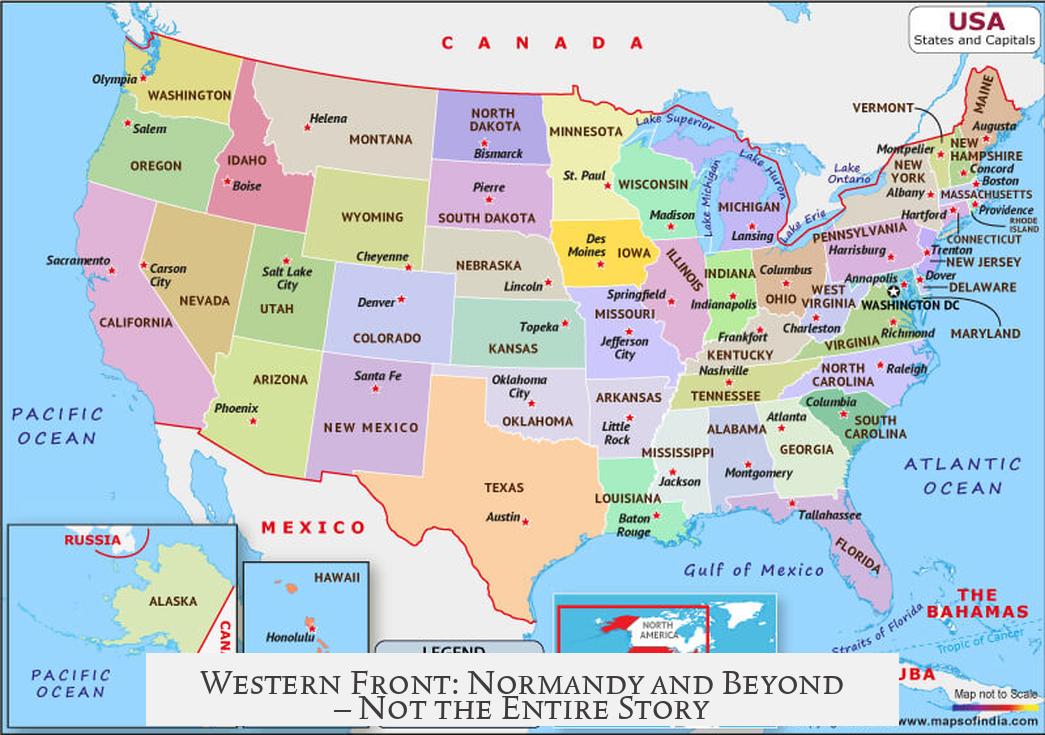
Lots of movies focus on Normandy and the liberation of Western Europe. While Americans were key players here, it’s important to note only about 20% of Nazi forces fought on the Western Front. Over 80% faced the Soviets. Normandy was a strong and symbolic land grab but wasn’t the war’s deciding battlefield by sheer force concentration.
Still, the USA shaped postwar Europe’s political map massively. Had the Western Allies not stormed the beaches, Stalin’s Soviet Union might have swept westward unchallenged. So, the American advance in France helped check Soviet expansion and laid groundwork for the Cold War’s geopolitical layout.
Strategic Bombing: A Mixed Bag
American (and British) strategic bombing campaigns decimated German cities and infrastructure. But historians debate their overall impact. Despite heavy bombing in 1943 and onward, German war production actually rose 80%, thanks to Albert Speer’s efficient management. So, while bombing was not a total waste, it didn’t cripple Germany as decisively as hoped.
Think of it as hammering on a forge while the smith keeps pumping fuel—disruptive, but far from fatal.
The Pacific Theater: America’s Heavyweight Role
Out in the Asia-Pacific, the United States really carried the bulk of the fight against Imperial Japan. The British and Australian forces participated but were small compared to the American presence. Around 90% of the fighting in this region involved U.S. troops and resources.
Japan’s unchecked aggression might have rolled on much longer if not for the U.S. Navy’s involvement. No other Allied nation was nearly as capable—or willing—to commit the necessary manpower and material to this massive oceanic conflict. In fact, without American intervention, the Japanese might have conquered Southeast Asia entirely.
China also deserves praise here. Though U.S. aid to China was lousy compared to what Chiang Kai-shek requested, the Chinese forces bogged down the Japanese and sapped their resources. The Soviets stepping into the Far East near war’s end further sealed Japan’s fate by preventing coordinated attacks with Germany.
Entry Point and Motivation: The Pearl Harbor Turning Point
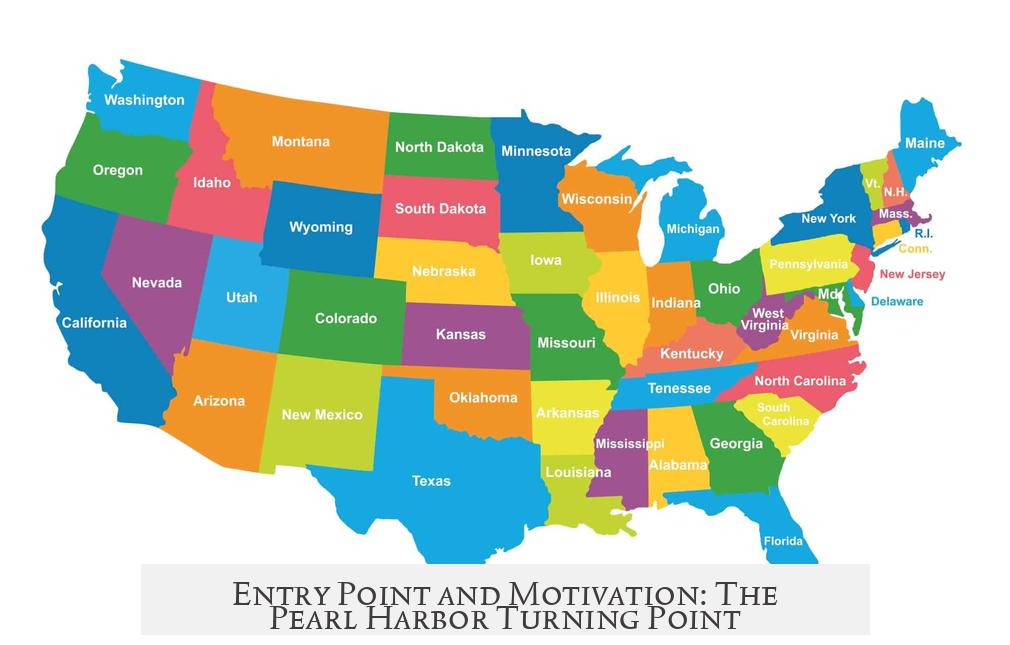
The U.S. didn’t dive into World War II immediately in 1939 or 1940, which some mistake for tardiness. In reality, America cautiously avoided entanglement until attacked at Pearl Harbor in December 1941. That surprise strike turned public opinion and policy overnight.
Before Pearl Harbor, the US had hoped Europe might deal with the Nazis without direct American involvement. Plus, tensions with Japan in the Pacific simmered separately, demanding attention. When the Japanese fleet crippled the U.S. Pacific Navy, America’s entry was driven not just by necessity but a blood-lust fueled determination to win.
Allied Cooperation: The Power of Teamwork
Could the Soviets have beaten Germany alone? Possibly, at a horrific cost. The sheer industrial and logistical support the U.S. provided turned that possibility into a practical reality. America’s massive production lines replaced Soviet losses of tanks, trucks, and weapons. The Allied victory was never a solo act but a symphony, with the USA as a critical member alongside the UK and USSR.
Hollywood likes its solo heroes, but here, it’s teamwork that won the day. The Red Army stormed Berlin, but could not have sustained the fight without American steel, trucks, and fuel. British intelligence and grit held firm as well.
The victory was a collective effort—a three-headed giant of steel, blood, and strategy. No single nation deserved the laurel wreath alone.
Final Thoughts: The Unseen Backbone of Victory
So, how big was the role of the USA in World War 2? In short, the United States was a titan of supply, logistics, and combat, with especially crucial influence in the Pacific and vital indirect support in Europe. Their factories churned out the raw materials, vehicles, and weapons that kept the Soviet and British armies fighting. Their soldiers brought critical manpower and firepower to Western Europe and the Pacific.
Without the United States, the Allies might have been crushed under the German blitzkrieg or Japanese expansion. The Soviet Union fought a bloody, heroic war, but American trucks and rails kept them moving. The UK held the line thanks to American supplies and new fronts in Africa and Italy. The Pacific War was essentially America’s theater, relying on its navy and industrial might.
Allied victory came from shared effort and sacrifice. So next time someone tries to reduce the American role to a minor cameo, remember this story of engines, trucks, troops, and teamwork that literally changed the world.
Quick Recap for Busy Readers:
- USA’s lend-lease shipped millions of tons of critical supplies to the USSR, fueling the Eastern Front.
- The American and British campaigns in North Africa helped divert German forces, aiding Soviet victories.
- Normandy invasion forced Germany to fight on multiple fronts, easing pressure on the Soviets.
- Strategic bombing damaged Germany but didn’t halt production.
- U.S. led the Pacific fight, decisively stopping Japanese aggression.
- Pearl Harbor catalyzed U.S. full entry into the war in 1941.
- The war’s success was an Allied team effort—no single country won alone.
And that, friends, is the *real* glory behind the Stars and Stripes waving over victory: heavy lifting, smart planning, and shared courage. America’s role in World War 2 was huge, crucial, and undeniable.
1. How crucial was the US lend-lease program to the Soviet war effort?
The US lend-lease program supplied the USSR with vital trucks, trains, fuel, and food. This aid helped motorize Soviet logistics, making their operations more effective. Field Marshal Zhukov noted the US supplies were essential to continuing the war.
2. Did US military actions influence the outcome on the Eastern Front?
Yes. US and British campaigns in North Africa and Italy diverted German forces from Stalingrad, helping the Soviets win. The US opening a Western Front forced Germany to fight on multiple fronts, easing pressure on Soviet troops.
3. How significant was the US role in the Western Front battles like Normandy?
The US provided well-trained troops and advanced weapons. Their involvement created a second front, forcing Germany to split its forces. This helped the Allies liberate Western Europe and limited Soviet control post-war.
4. What role did the US play in the Pacific Theater during World War II?
The US led most operations in the Pacific against Japan. American naval power was critical in stopping Japanese expansion. Other countries contributed but on a smaller scale compared to the US.
5. How effective was the US strategic bombing campaign against Germany?
While the bombing damaged German infrastructure, overall war production increased during 1943. The bombing slightly slowed Germany but was not decisive in ending the war.
